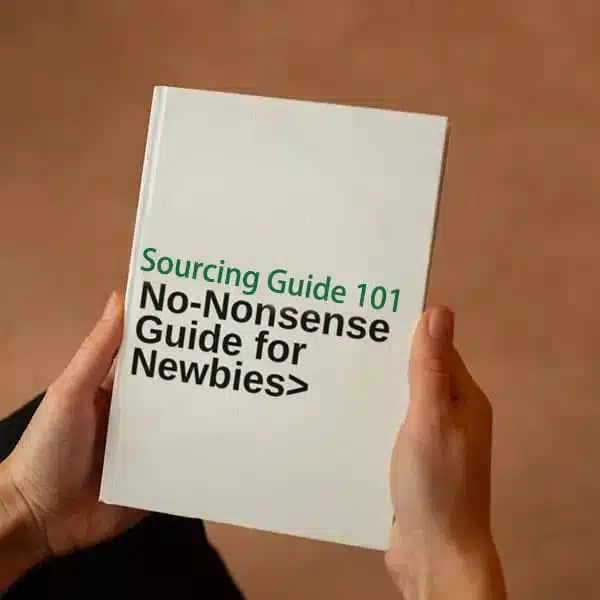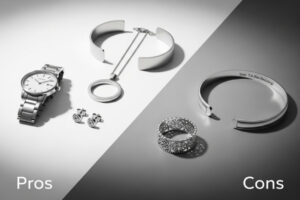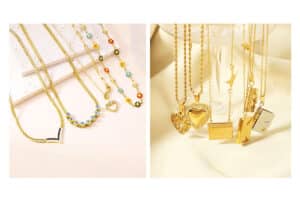You’re ready to use factories in China – that’s great! But hold on. Before you start looking on Alibaba or other websites, the biggest and most important choice you’ll make is what product you’re actually going to import and sell. This isn’t a small thing; it’s the foundation of your whole plan, whether you want to be a top seller on Amazon, run a small local shop, or start a new website.
Why is this so important? Because there’s no single "perfect product." Something that sells great for one person might be a complete failure for another. Success depends on matching your product with your business plan, what’s special about where you live (like local trends, rules, and other sellers), and what your customers really want and need. We see this all the time: excited new business owners jump in with a product that looks good on paper but, in reality, is something nobody really wants to buy. This leads to wasting money and feeling really bad. Sometimes, this first mistake can sadly stop a good business idea before it even starts.
So, let’s look at the common ways people choose products, with some new ideas and real examples that work today.
Popular Products – Following a Popular Trend (But Be Careful!)
You’ve seen them everywhere on TikTok or Instagram: portable mini-projectors that turn any wall into a movie screen, or weighted blankets1 that promise better sleep. These are trending products, made popular by a sudden increase in online searches and lots of talk on social media. The dream is to join the trend early and make some quick money.
The Good Part: Lots of people want to buy it right away, thanks to all the excitement online or a sudden new popular style. People who act fast can sell a ton of stuff, quickly.
The 2024+ Reality Check:
Faster changes: Social media and fast fashion mean trends get popular and then disappear faster than ever. What’s hot today might be forgotten next month. Think about those "sunset lamps" – they were huge for a minute, then interest dropped off fast.
Not lasting long: Many trends are driven by short-lived online challenges or styles that don’t have a long-term use, which makes demand incredibly unstable.
Quickly filled with competitors: Other sellers can find similar items from China so quickly that the market gets crowded almost overnight. This makes it hard for anyone to make much profit.
You’re not just competing with other small sellers, but often with the manufacturers themselves selling directly on platforms like Amazon or TikTok Shop.
Risky quality: Rushing to source a trending product, you might not be careful enough when checking suppliers and product quality. This leads to returns and bad reviews.

- Our Creative Idea: Instead of trying to sell the trend when it’s most popular, look for what the next version of that trend might be. If portable projectors are hot, could the niche be ultra-short-throw portable projectors for small apartments? If weighted blankets are known, is there a demand that hasn’t been met for cooling weighted blankets for people in warmer places? Focus on a related demand that the trend shows people have, rather than the trend itself. But even then, be super carefully.
Low-Value, High-Demand Products – The Mistake of Easy Sales From High Volume
Items like standard cardboard shipping boxes, basic plastic forks and spoons, or plain paper notebooks seem like a safe choice. Everyone needs them, and the price for each one from China looks incredibly cheap. The idea is to sell a huge amount to businesses or people.
- The Logic: People always need them, and the price from the factory seems unbelievably low. What could go wrong?
-
The Hidden Problems & Modern Challenges:
Shipping is the Real Big Cost: For big, cheap items, the cost of sea shipping freight, import duties, and local delivery often costs more than the product itself. Google might show that people are searching for "shipping boxes," but it doesn’t show how little money you make after paying for all the shipping. You have to fill a whole shipping container just to make the shipping cost per item low enough, which requires a lot of money to start with.
Pressure to Be Eco-friendly: More and more, shoppers and businesses are looking closely at how products affect the environment. Selling things like plastic tableware is getting harder because of plastic bans and people wanting greener options.
Tough Local Competition: Big companies in your country often have their own local supply chains2 set up and get huge savings from buying in large amounts that you just can’t compete with.

- A Niche Idea (Maybe): Could you import fancy, eco-friendly versions? Think of mailer bags that break down in compost, or cool-looking reusable bamboo cutlery sets. The cost and shipping problems are still there, but you might find a group of buyers willing to pay more for products that are good for the planet. This needs careful math and finding businesses that show they care about being eco-friendly. But for most small importers, this type of product is still very tough.
Ordinary Consumer Goods – How to Stand Out with Everyday Products
Think of basic phone charging cables, simple canvas tote bags, or standard ceramic coffee mugs. These are everyday items with steady demand, but the market is incredibly crowded.
-
The Problem: How do you sell a basic USB-C cable when Amazon has thousands of them, many for under $5? Big stores buy millions of these, which pushes the price down. It becomes a fight to be the cheapest, and it feels impossible to be different. A lot of people search for "tote bag," but it’s hard to make sales if you don’t have a special reason for them to buy from you.
-
How to Stand Out in a Crowded Market:
-
Offer Customization: Don’t just sell a tote bag; sell tote bags that people can customize by uploading their own art or picking unique color combos. You can find suppliers in China or in your own country to do this. Studies show that people will pay more for something made just for them.
-
Solve a Small, Annoying Problem: Basic charging cables break all the time. Could you find cables made with stronger material, or offer extra-long (like 10-foot) braided cables in cool colors that you can’t find in regular stores? Focus on making them last longer or be more convenient.
-
Selected Styles: Instead of plain mugs, put together a special collection based on a design style (like simple and clean, or bright and busy) that you see on Pinterest or design blogs. Aim for a specific group of people who care about style.
-

- Our Advice: Don’t try to beat the giant companies on price for basic stuff. Focus on adding value with customization, better features, a unique look, or better quality that makes it okay to charge a higher price.
Small-Demand Products in a Niche – Your Hidden Treasure
This is where many small businesses find real success. Instead of trying to appeal to everyone, focus on products for a specific group of very excited people who can’t find what they need. The total market might be smaller, but it’s usually way less competitive and you can make more money.
-
Examples Based on Current Niches:
Crochet hooks with special handles for people with arthritis: This solves a real problem for people in a huge hobby community. You might not see a lot of searches for the exact term, but you’ll see a lot of talk about it in craft forums. -
Custom storage trays for popular board games3 (like Wingspan or Gloomhaven): This makes the game more fun for serious players who spend a lot of money on their hobby. These groups are very active online (on Reddit or BoardGameGeek).
-
Cat toys infused with potent Silvervine powder instead of traditional catnip: A lot of cats (maybe 30-50%) don’t react to catnip. This product is specifically for cat owners looking for other options that work, which is a common problem people talk about in cat forums.
-
Why This Is a Great Strategy:
-
Super Targeted Marketing: You can reach your exact customers very easily through special Facebook groups, subreddits, niche blogs, or by using very specific keywords in Google Ads.
-
Community Building: You can talk directly to your customers, get their feedback, and make them loyal. They become your biggest fans.
-
Higher Margins: Less competition usually means you can price your product based on the value it gives, not just on how much it cost you.
-
-
Our Advice: Use tools like Google Keyword Planner (look for specific long-tail keywords), explore niche forums, and analyze Amazon subcategories to find these markets that other sellers are ignoring. Solving a real problem or making a hobby better is often the key.
The Brand Name Game – High Risk, Low Reward (Usually)
Importing real Apple accessories (like MagSafe chargers), popular gaming peripherals (like Razer mice), or high-fashion items seems like a great idea because you know people already want them.
-
The Hard Truth:
-
Authorization is King (and Rare): Brands are very strict about who can sell their stuff. To buy real products, you usually have to be an "authorized distributor," which is a title saved for big, established companies. Buying from unofficial sellers makes it much more likely you’ll run into.
-
Widespread Fakes: Marketplaces are flooded with convincing fakes. If you get caught selling fake stuff, you can be banned from platforms like Amazon, ebay, get into legal trouble, and get a very bad reputation. Brands are tougher than ever on this.
-
Customs Hold: Importing branded goods without proof of authorization is a red flag for customs worldwide. Your whole shipment could be taken away.
-
-
Potential (Niche) Exceptions:
Potential (Niche) Exceptions: -
Authorized Regional Sourcing4 (Very Rare): As mentioned before, if a brand isn’t officially sold in your country, and you find a Chinese supplier with proof you can check that they’re allowed to export it, and your country’s customs office is okay with it, it might work. This is very complicated and doesn’t happen often.
-
The Refurbished/Parts Market5: Importing used/refurbished electronics (iPhones, specific Android models) or real replacement parts (like Samsung screens sourced from taking apart or repair channels) is a real, legal way to do business, often serving repair shops. This requires technical expertise6 and really good quality checks.
- Our Strong Advice: For most small businesses, especially startups, the risks and headaches of importing new, famous branded goods are much bigger than the rewards. It’s better to focus on building your own brand.
Category Kings & Queens – Growing a Business Step By Step
Instead of spreading yourself thin, choose one specific product category and aim to become the go-to expert and brand within it. This is a long-term plan focused on building trust and keeping customers coming back.

-
Modern Examples:
-
Eco-Friendly Pet Products: Focus only on green toys, waste bags that break down, natural treats, and beds made from recycled stuff. You can connect with the big trends of treating pets like family and shoppers caring about the environment. You can create content about how to be a responsible pet owner.
-
Specialty Coffee Gear:
Sell only to the growing number of at-home coffee experts. Offer high-quality grinders, pour-over kits, special filter papers, and espresso tools. Make "how-to" guides and video tutorials about brewing coffee. -
Smart Home Devices for Energy Efficiency: Focus only on smart thermostats, smart plugs that track energy use, smart lights, and similar gadgets. Target homeowners who want to lower their energy bills and be kinder to the planet.
-
-
The Power of Focus:
- Deep Expertise: You get to know everything about the suppliers, materials, quality, and what customers want in your niche.
- Brand Trust & Authority: Customers see you as a specialist, not someone who sells a little bit of everything. This builds trust and makes it okay to charge a bit more. Search engines also like to see expert content in one area.
- Smarter Product Development: You can identify gaps and innovate within your category, launching related products that your loyal customers will likely buy.
-
Our Strategic Insight: In a world with so many choices, being a specialist protects your business. Pick a category you care about, research it like crazy, and work to be the best source for those specific needs. This is how strong, lasting brands are often built.
Conclusion
Choosing the right product to import from China in today’s market requires more than just finding a low price. It demands understanding fast-moving trends (and their risks), the hidden costs of logistics, the power of differentiation in crowded spaces, the potential of underserved niches, and the long-term value of building focused brand authority. By thinking strategically and creatively about your product choice, you significantly increase your chances of building a profitable and sustainable import business.
-
Learn how weighted blankets can help you achieve better sleep and relaxation, backed by expert insights. ↩
-
Discover how local supply chains can provide competitive advantages and insights for businesses looking to optimize their operations. ↩
-
Discover how these inserts can enhance your gaming experience by keeping your games organized and accessible. ↩
-
Explore this link to understand the complexities and Small differences of Authorized Regional Sourcing, especially in niche markets. ↩
-
Discover insights into the Refurbished/Parts Market, a legitimate business model that can benefit repair shops and tech enthusiasts. ↩
-
Learn why technical expertise is crucial for success in the electronics refurbishment market, ensuring quality and reliability. ↩





